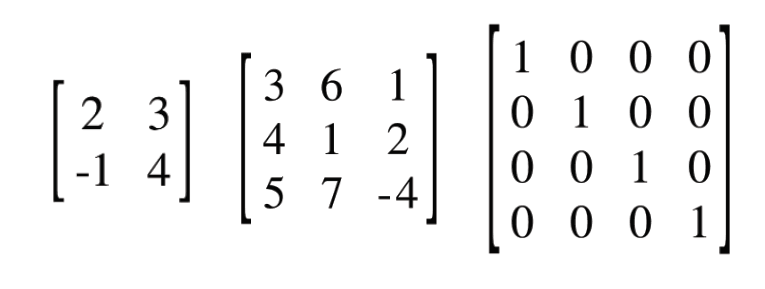How to Find the Rank of the Matrix?
Updated on February 1, 2024
Welcome to Brighterly, where we make learning math exciting and accessible for kids! In this article, we’ll explore the concept of matrix rank, an essential topic in linear algebra. Understanding the rank of a matrix is not only crucial for higher mathematics but also forms the foundation for various applications in science and engineering. At Brighterly, we believe in breaking down complex concepts into easy-to-understand lessons, perfect for young learners and aspiring mathematicians. Let’s dive into the world of matrices and uncover the significance of their rank.
What is the Rank of a Matrix?
The rank of a matrix is an important concept in linear algebra, especially in the fields of mathematics and engineering. It tells us the number of linearly independent rows or columns in a matrix. Essentially, it helps to determine the dimension of the vector space spanned by its rows or columns.
Think of a matrix as a grid of numbers. The rank of a matrix reveals how many rows or columns in this grid are unique and cannot be created by combining other rows or columns. For instance, if all rows in a matrix are multiples of each other, its rank is 1. But if each row is unique, the rank is equal to the number of rows.
The rank of a matrix is crucial in solving systems of linear equations. A matrix with full rank (equal to the number of rows or columns) means the system has a unique solution. Understanding the rank helps in grasping the structure and properties of a matrix.

How to Find the Rank of a Matrix?
Finding Rank of a Matrix by Minor Method
The ‘Minor Method’ is a way to find the rank of a matrix using minors. A minor of a matrix is determined by deleting a row and a column and calculating the determinant of the smaller matrix. The rank of the original matrix is the highest order of any non-zero minor.
For example, consider a 3×3 matrix. If all 3×3 minors are zero, but there is a non-zero 2×2 minor, the rank is 2.
Rank of a Matrix Using Echelon Form
The Echelon form of a matrix is another method to find its rank. Transform the matrix to its echelon form using elementary row operations. The number of non-zero rows in this form is the rank of the matrix.
For instance, if a 4×4 matrix is transformed into echelon form and two rows are non-zero, its rank is 2.
Rank of a Matrix Using Normal Form
Normal form, also known as reduced row echelon form, is a refined version of the echelon form. Here, the matrix is further simplified, and the rank is again the number of non-zero rows.
Column Rank and Row Rank of a Matrix
The column rank of a matrix is the number of linearly independent columns, while the row rank is the number of linearly independent rows. An important theorem in linear algebra states that the column rank and the row rank are always equal. This common value is simply referred to as the rank of the matrix.
Properties of Rank of a Matrix
Non-Negativity:
The rank of any matrix is always a non-negative integer.
Rank of a Square Matrix:
For a square matrix, the maximum rank is equal to the size of the matrix.
Rank of a Product:
The rank of the product of two matrices is less than or equal to the rank of either matrix.
Rank of a Matrix Examples
Example 1:
A 2×2 matrix with independent rows and columns has a rank of 2.
Example 2:
A 3×3 matrix where two rows are identical has a rank less than 3, typically 2 or 1 depending on the other rows.
Practice Questions on Rank of a Matrix
- Find the rank of a 4×4 matrix with two identical rows.
- Determine the rank of a 3×3 matrix where all elements are non-zero.
FAQs on Rank of a Matrix
What is the significance of matrix rank?
The rank of a matrix is crucial in determining the solutions to a system of linear equations represented by the matrix.
Can the rank of a matrix be greater than its dimensions?
No, the rank of a matrix is always less than or equal to its smallest dimension.
How does rank help in matrix inversion?
A square matrix is invertible if and only if its rank is equal to its size.




